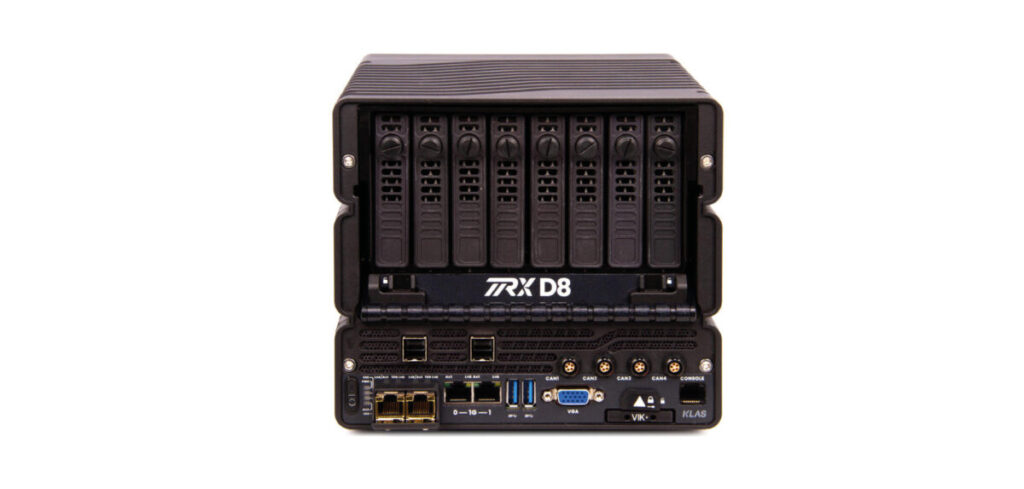Engineering and design company Klas, which is headquartered in Ireland and specializes in communications solutions at the network edge, has released a new piece of hardware purpose-built for autonomous vehicle research and development, the TRX D8.
Aimed squarely at the field testing of ADAS (advanced driver assistance systems), the unit is a ruggedized data storage system designed specifically for edge computing applications, which is set up to receive data from both Ethernet and CAN streams. The company notes that the system is already in use with one OEM.
Speaking to Autonomous Vehicle International, company CTO Frank Murray explained that with a background in satellite communications, defense and latterly the rail industry, a move into the automotive sector was a logical choice for Klas: “We’ve always been about connecting people where there is no connectivity and we’ve been doing that for years.”
Murray noted that over the past half decade, there has been an exponential growth in the volume of data that needs handling. “Ultimately, the amount of data produced is always going to be greater than the pipe available to move it through,” he said. “There has been a trend toward pushing compute power out toward the edge of the network, so you can pull the intelligence out from the data and just send back what matters.”
With this in mind, the D8 features up to 240TB of onboard storage, coupled with either 8, 12 or 16 core processors and up to 96GB of RAM. The storage can be removed, with each drive housed in its own hardened cassette, but the D8 is also designed to be part of a modular system which includes both an HPC (high performance computing) module and a 4/5G router module. When paired with these modules, there is the potential to perform data processing on board a test vehicle.
“Our goal is to make AD test car build out much simpler that it is currently,” said Murray. “This will allow you to work on and analyze the data at source, rather than get it back to the cloud where the compute power tends to reside.”
The TRX D8 uses Klas’s own in-house developed OS, which it has purpose-designed for edge applications with a focus on reliability and security, coupled with a built-in hypervisor to allow OEMs to run their own software systems.
“We developed KlasOS to sit on the edge of the network and its job is primarily to make sure the computer always boots, so we made it highly robust and also upgradable in the field. What we made is a effectively a Linux distro [distribution – in effect, an OS made from a collection of software based on a Linux kernel, that behaves more like an embedded system], to upgrade, it is a single file, not lots of patches.” Murray said.
The system is also hardened from a security perspective, drawing on the company’s prior experience in defense in terms of encryption and protection from cyber threats. “Basically, we’ve minimized the attack surface to make sure it is secure as possible,” Murray stated.
From a UI perspective, Klas has worked extensively with Cisco, and has harnessed its UI, which Murray describes as perhaps not the easiest to use but an industry standard that many thousands of engineers are trained on. “That’s been a huge benefit for us getting into new markets, because those skill sets are very common and anyone with Cisco training can use our boxes right away,” he said.
In addition to being a modular system, capable of being upgraded, the D8 is also designed specifically to work at a low power consumption and is adapted to run on 10-36V DC power supplies.


